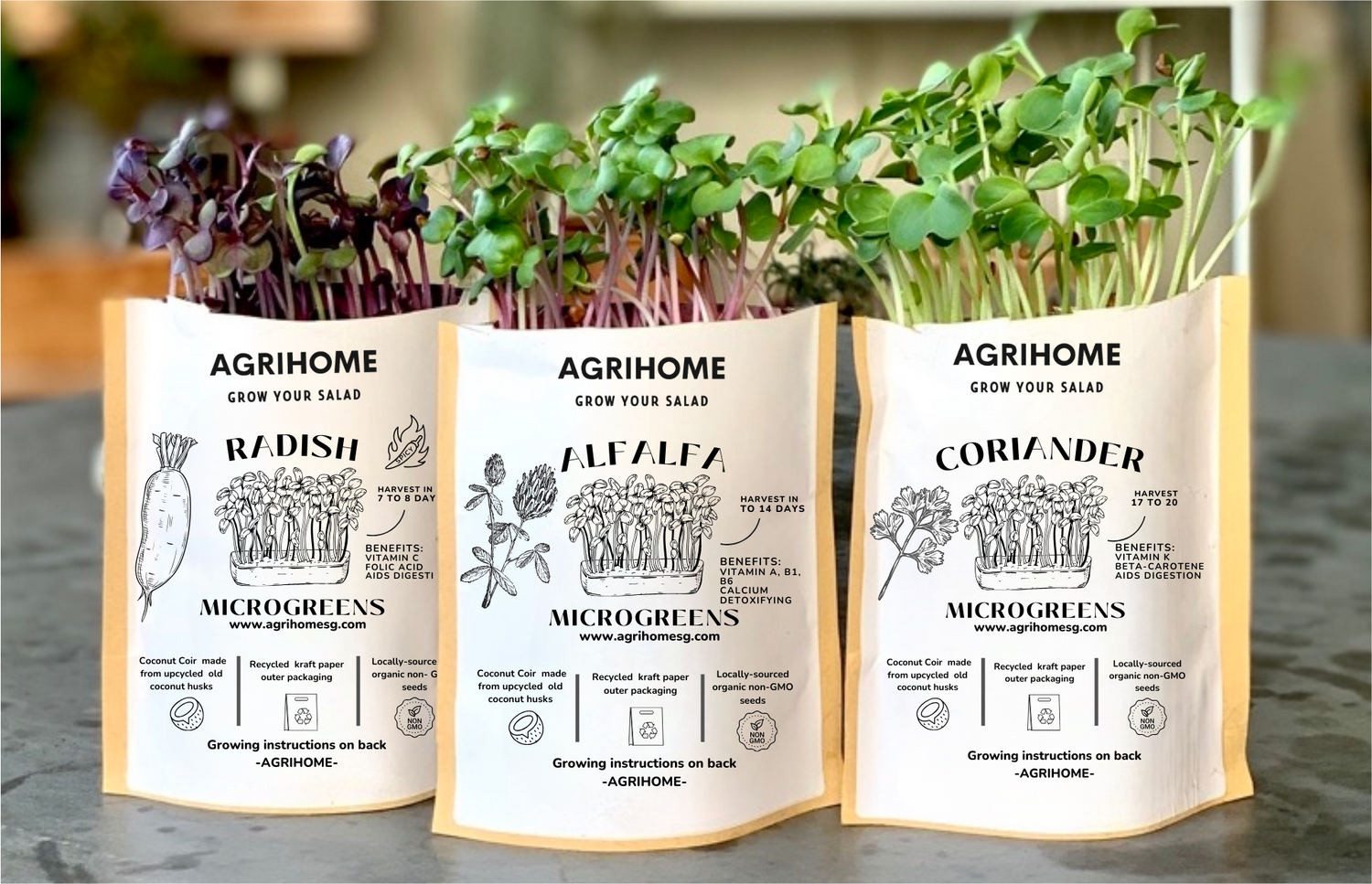Microgreens Nutrition and FAQ

So you've been hearing a lot of mentions of Microgreens, but am not really sure what they are? They low key remind you of "Tau Geh" but in fact are slightly different.
Most plants are more nutritious when grown in microform since the nutrients are more concentrated and ready to assist plant growth. Compared to their mature plant counterparts, these little greens can have up to 40 x more nutritional value meaning a little definitely goes a long way.
This article will cover in more detail the specific microgreens varieties that are available on our webpage. So do expect this page to be updated when we release more varieties over time ;D
Planting/ watering tips
- Ensure that the expanded growing medium in the bag is level before sowing your seeds. This ensures your Microgreen seeds grow evenly.
- When watering the seeds for the first time, ensure the seeds get a good mist of water. With the bag partially sealed, no further watering is needed until you see signs of germination.
- Microgreens shoots like most plants do better with under-watering than over-watering.
- Once the seeds starts to sprout into shoots, water just enough to ensure the growing medium is moist. A good indication is to touch the growing medium with your finger tip. If it is moist, no additional watering is needed. if dry, water accordingly.
-After seeds have passed germination, to reduce the occurrence of mould / mushy peas, aim to water the growing medium instead of the microgreens, and place the bag in a well ventillated room.
- More and frequent watering is needed when the Microgreens are close to harvesting, as they have more developed root systems that take up more water.
- Experienced growers can estimate when watering is needed just by feeling the weight of the planted microgreen bag.
Daikon (Japanese Wasabi)
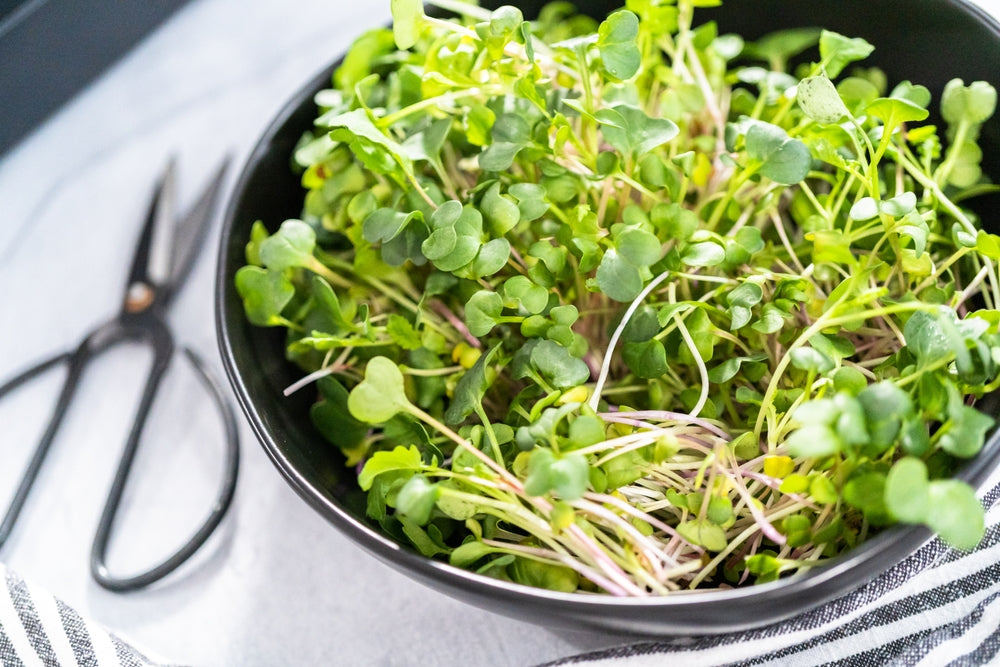
Germination time: 5-7 days
Harvest: 1 time
Taste: Expect an explosion of Wasabi flavour, perfect flavour booster
Nutrition: Vitamin C, zinc, potassium, folate, manganese, copper, sodium, phosphorus, dietary fiber, niacin, riboflavin, vitamin B1 & B6, calcium, iron, magnesium.
Planting Tips: The easiest and fastest grower of the lot, dont sweat it. Water more frequently closer to harvest date.
Alfalfa “father of all foods”

Factsheet: The Arabic word Alfalfa means “father of all foods.” It stands to reason, Alfalfa is extremely nutritious. Traditional Chinese Medicine has used Alfalfa leaf to stimulate the appetite and relieve ulcers
Germination time: 10-14 days
Harvest: 1 time
Taste: Earthy mild flavour, fine texture. Rinse off the leafy hulls or eat them no problem.
Nutrition: Protein and Vitamin A, B1, B6, C, E, and K. It also contains calcium, potassium, carotene, iron, and zinc.
Planting Tips: A slower grower, with smaller foliage and hence tends to be more mould-prone when overwatering. Feel free to harvest them later if you prefer your alfalfa with larger open leaves. Some poeple prefer to rinse off the seeds hulls to increase the storage lifespan. They pose no problem if eaten.
Maple Pea (Tendrils)
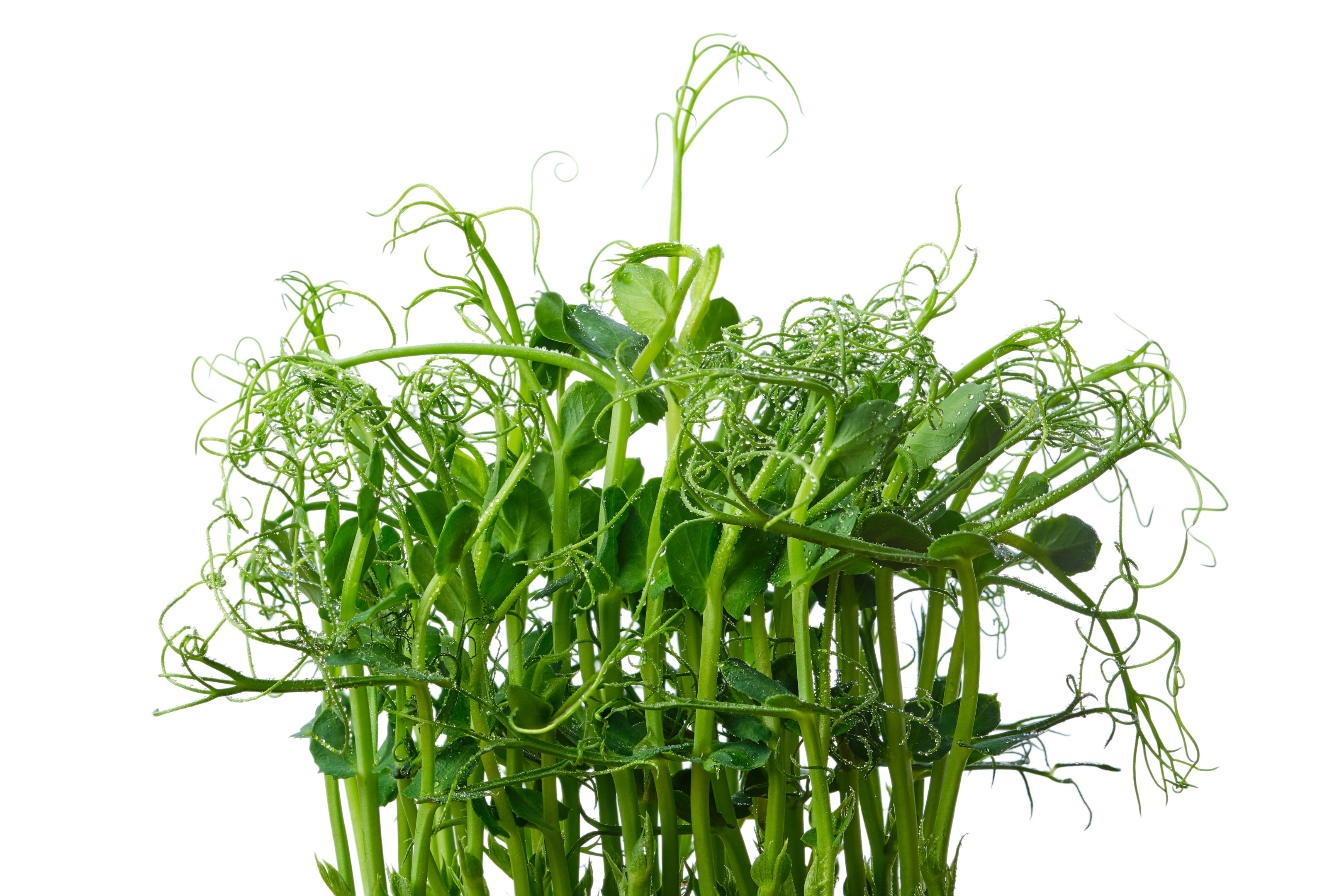
Factsheet: The pea plant is a vine and can grow up to two meters, using its coiled tendrils to climb. These tendrils are an excellent backdrop when plating dishes. Aside from this, the fresh and refreshing flavor it adds to a meal makes it a favorite among cooks and chefs. Plus they are high in protein, and contain 4x more Vitamin C than Blueberries!
Germination time: 8 to 12 days
Harvest: 3 times
Taste: Earthy mild flavour, fine texture
Nutrition: Vitamin A, Vitamin C, and Vitamin K. Perhaps the most popular pea shoots health benefits are its anti-cancer and anti-inflammatory properties, weight loss and heart health promotion, and finally, maintaining low blood sugar levels
Planting Tips: A fast easy grower, that requires 12 hours of soaking. Pea shoots do not do well with overwatering, so make sure to not overwater and ensure sufficient ventilation. Remove any mouldy or mushy peas in the process. Once sprouted, aim to water the growing medium instead of the peas to prevent mushy rotting peas.
When harvesting, cut higher around 2 inches above the soil line, to allow for up to 2 more harvests with your pea microgreens.
Wheatgrass (Grass Juice)

Factsheet: Wheatgrass is an incredibly nutritious microgreen that has been around for centuries. Latin speakers know it as Triticum L., Not just humans love wheatgrass: cats and rabbits can also enjoy this superfood's revitalizing properties.
Germination time: 7 to 10 days
Harvest: 3 times
Taste: mild sweetness with a fibrous texture, perfect in juices and cocktails alike!
Nutrition: lower blood pressure and cholesterol, but also reduce arthritis pain. Vitamin A, B complex C , E and K, Iron Calcium & Magnesium along with 17 amino acids plus Enzymes Proteins Chlorophyll & Phytonutrients
Planting Tips: Another fast easy grower, that requires 12 hours of soaking. Shoots will start off yellow, but quickly turn green with some light.
When harvesting, cut higher around 2 inches above the soil line, to allow for up to 2 more harvests with your wheatgrass microgreens.
Red Amaranth (Pink microgreens)

Factsheet: Their pink purple vibrant appearance also adds a delightful pop of colour to your plate, making your meals visually appealing. Perfect colour pop for garnishing.
Germination time: 9 to 14 days
Harvest: 1 time
Taste: Mild, earthy flavour that complements both sweet and savoury dishes, and they are commonly used as a garnish. Enjoy their delicate, mild flavour by adding them to salads, sandwiches, wraps, smoothies, or garnishing your favourite dishes.
Nutrition: Amaranth microgreens are densely packed with vital nutrients, including vitamins A, C, and K, as well as folate, iron, and calcium. Fresh 100 g of leaf amaranth contains 29% DRI of iron, and 43.3 mg or 70% of Vitamin C.
Planting Tips: Another fast easy grower, that sprouts in 2-3 days. With their thin stem, its better to expose them to light early on, so the stem does not get too skinny and elongated, and risk flopping over.
White leaf Amaranth
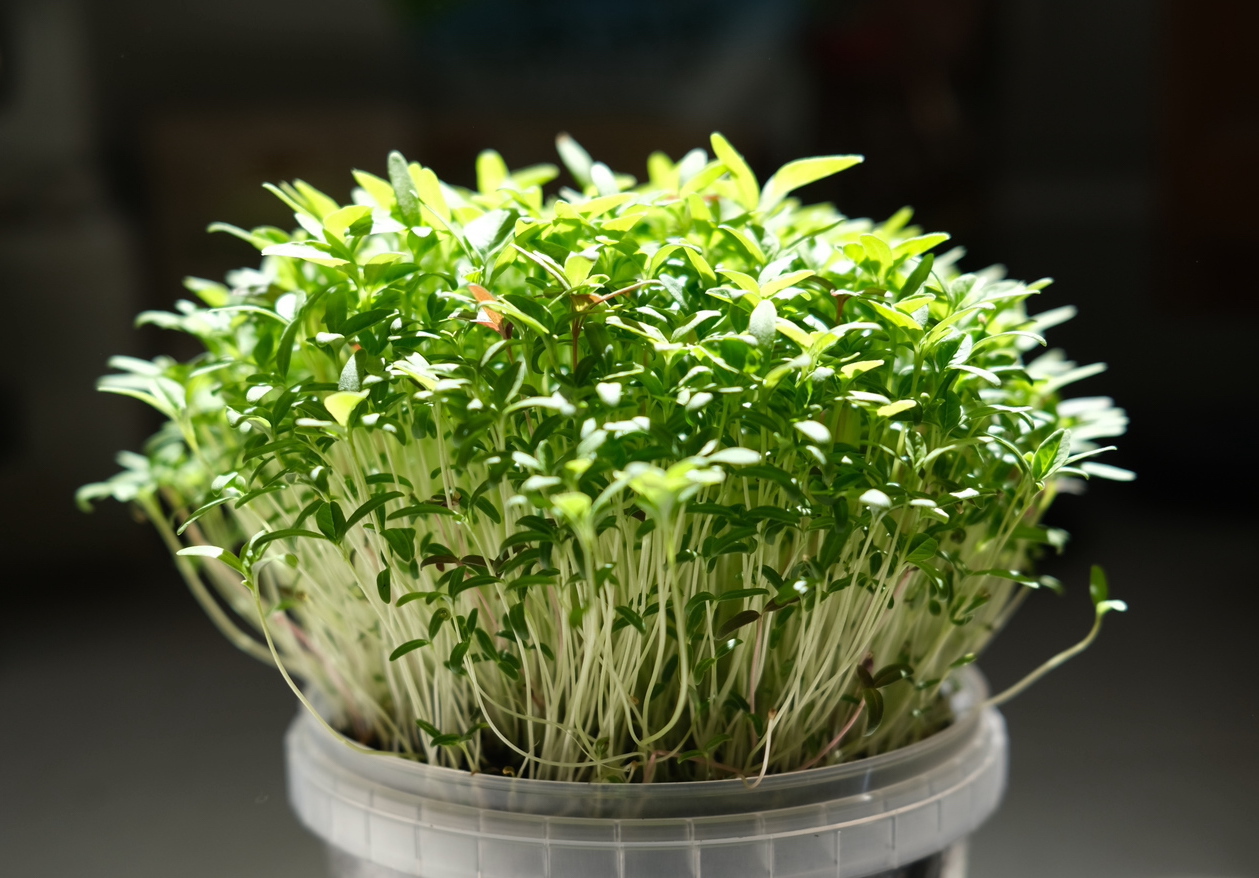
Factsheet: Often overshadowed by the more colourful red cousin, the white leaf vegetable (fully grown) is actually very popular in Taiwan and Japan.
Germination time: 9 to 14 days
Harvest: 1 time
Taste: They are crisp, tender, and have a mild and sweet, earthy flavor reminiscent of mustard but with much less spice and a delicate grassy finish. Enjoy their delicate, mild flavour by adding them to salads, sandwiches, wraps, smoothies, or garnishing your favourite dishes.
Nutrition: Amaranth microgreens are densely packed with vital nutrients, including vitamins A, C, and K, as well as folate, iron, and calcium. Fresh 100 g of leaf amaranth contains 29% DRI of iron, and 43.3 mg or 70% of Vitamin C.
Planting Tips: Another fast easy grower, that sprouts in 2-3 days. With their thin stem, its better to expose them to light early on, so the stem does not get too skinny and elongated, and risk flopping over.
This cultivar also grows slower than other amaranth species.
